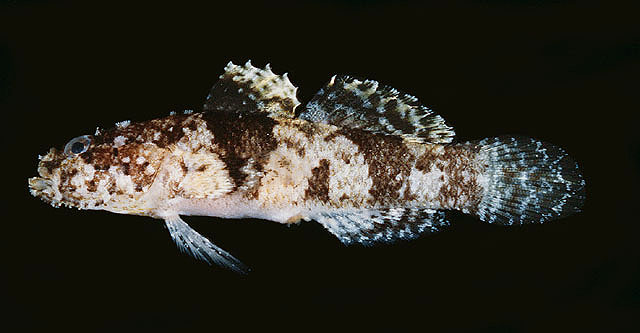| Gobiidae (Gobies), subfamily: Gobiinae |
| 7 cm TL (male/unsexed) |
|
reef-associated; marine; depth range 1 - 37 m |
| Indo-Pacific: Red Sea and western Indian Ocean to tropical western Pacific from southern Japan and Ogasawara Ids, south to Australia, Queensland, New Caledonia and Tonga. |
|
Dorsal spines (total): 7-7; Dorsal soft rays (total): 9-9; Anal spines: 1-1; Anal soft rays: 7-7. Dark bar from eye to upper lip, vertical bar under eye, broad dark band from eye to opercle; vertical bar under first dorsal fin; caudal fin with wavy dark stripes (Ref. 2798); characterized further by pale brown to whitish body color; variably joined pelvic fins at median from base to about two-thirds length of fifth ray; pelvic frenum absent; very long and pointed caudal fin; longitudinal scale series 63-67; cycloid scales on head and anterior body; becoming ctenoid posteriorly; cycloid scales on cheek and opercle; predorsal scales 11, extending to interorbital space; head with prominent papillae ridges; depth of body 4.7-5.5 in SL (Ref. 90102). |
| Found in crevices and caves (Ref. 2334, 9360), usually under loose debris (Ref. 48637). |
|
Least Concern (LC); Date assessed: 25 June 2018 Ref. (130435)
|
| harmless |
|
Including Amirantes (Ref. 33390). Museum: Mahé, southeast side, BPBM 35521 (3: 24-36 mm SL) (Ref. 10685). |
Source and more info: www.fishbase.org. For personal, classroom, and other internal use only. Not for publication.

